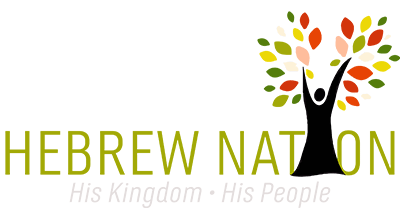Dr Hollisa Alewine – Footsteps of Messiah Part 62 (Footfalls on Kings)
The double Torah portion has a common thread: Those in need of purification, healing, and restoration must go through the agency of a human priest. This human priest is a type and shadow of Messiah Yeshua, a priest after the order of Malkhi-Tzedek. With types and shadows, expect some things to be identical, yet other things to be slightly different in application. As Pastor Mark and Tammy like to say, “patterns and principles.”
The one seeking restoration brings his or her various offerings to the doorway of the Tent of Meeting. From there, the service works its way inward to the bronze altar. The flames of the bronze altar purge out sin, and they provide atonement, or covering. It is from these very coals that the incense service moves the process of restoration even closer to the Divine Presence, the golden incense altar.
In performing their services, the Cohanim were required to wear a turban-like headcover (the high priest wore a type of crown on his) and to be girded with a belt, or sash. Without these, the priests could not perform the service.
In contrast, the metzorah, or leper, was required to let his hair go loose and wear torn clothes. These practices were forbidden to the priesthood when they served in the holy spaces, for they are identified with death and mourning.
Then Moses said to Aaron and to his sons Eleazar and Ithamar, “Do not uncover your heads nor tear your clothes, so that you will not die and that He will not become wrathful against all the congregation.” (Le 10:6)
“As for the leper who has the infection, his clothes shall be torn, and the hair of his head shall be uncovered, and he shall cover his mustache and cry, ‘Unclean! Unclean!’” (Le 13:45)
“The priest who is the highest among his brothers, on whose head the anointing oil has been poured and who has been consecrated to wear the garments, shall not uncover his head nor tear his clothes.” (Le 21:10)
The moral of the story? Those who minister on behalf of others have fewer “rights” and more “atonement, covering” responsibilities. Priests are not allowed the depth of grieving behaviors permitted to others.
So what does that have to do with us?
Following the pattern, from Shavuot onward, members of a royal priesthood need “working clothes,” not just a garment of salvation:
A headcover, possibly a “credit crown”
An untorn garment (why else was Yeshua’s garment left whole?)
A sash or belt
Shavuot is the axis of the journey. The Mishkan and priesthood were inaugurated at Sinai to serve the tribal kingdom of royal priests. We should expect these priestly clothes to be explained in the context of Sinai. Having followed the Presence from Egypt to Sinai, from ”animal food” barley to the finest of wheat at Shavuot in untorn garments of salvation, it was time to receive the additional garments and crowns of a royal priesthood. When the Israelites said, “We will do, and we will hear,” they were awarded two…no, one…crown(s).
Please SUBSCRIBE to our newsletter to get new teachings.
Read More



